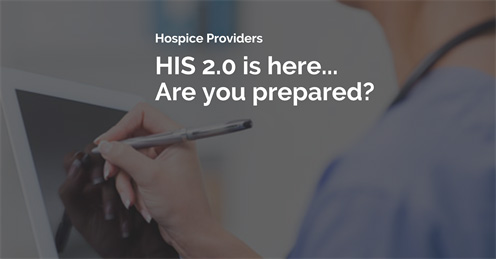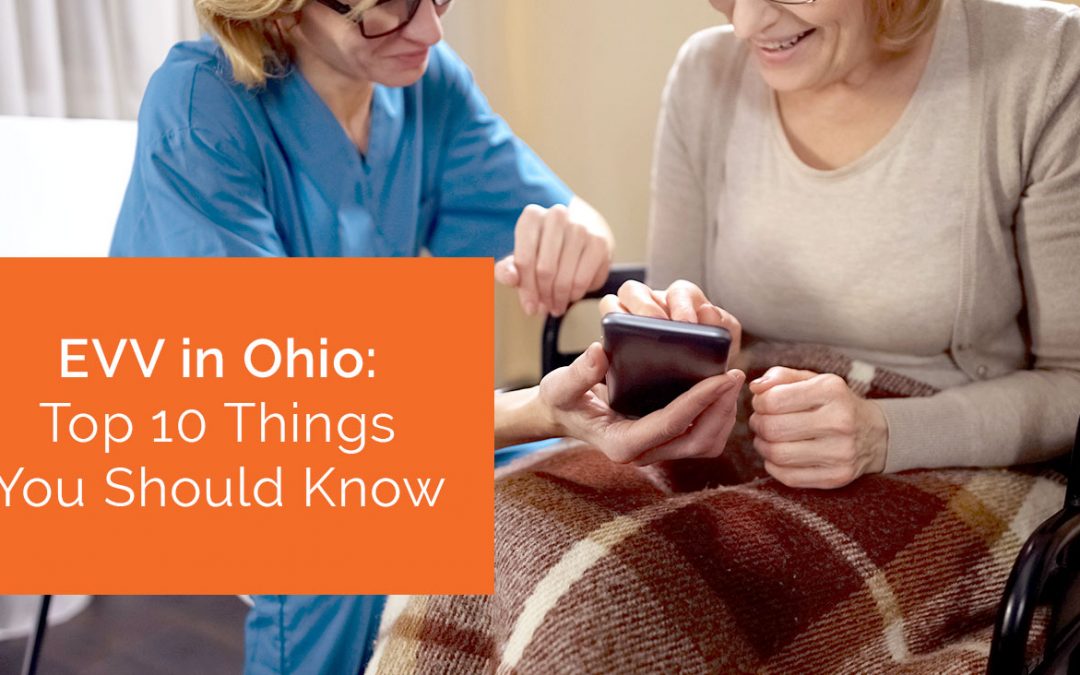The emphasis on quality in hospice reporting is becoming very real as new hospice quality reporting and measures started on April 1, 2017 with the patient-level data collection instrument, the Hospice Item Set (HIS) 2.0. In the past, few measures were in place for the hospice sector, but now the CMS has released a new reporting program to enhance quality care within the hospice environment.
HIS is a set of clinical quality measures that have to be submitted for each patient upon admission, discharge or death. The HIS, which pulls information out of the patient record, informs the measures. The information coming out and the data you submit to CMS are used to calculate these measures.
The importance of the combination of compliance and quality reporting is doing the best to meet the requirement but also to assess your practice based on the reporting data so in turn, you’re providing the best quality care for patients and families.
Understanding the Requirements
Hospice providers are required to submit two HIS records for each patient admitted to their organization – a HIS Admission record and HIS Discharge record. The HIS Admission is comprised of administrative items for patient identification and clinical items for calculating the seven quality measures. A HIS Discharge record is a smaller set of administrative items also used for patient identification and of discharge information, which will be used to determine patient exclusions for some of the seven quality measures.
HIS submissions will be electronically submitted to the CMS and the timeframes differ by record:
1. Completion Deadlines:
- HIS-Admission: 14 days after admission
- HIS-Discharge: 7 days after discharge
2. Submission Deadlines:
- HIS-Admission: 30 days after admission
- HIS-Discharge: 30 days after discharge
HIS 2.0 – What’s New?
The biggest changes to HIS 2.0 are that providers are required to report on level of care, visits by discipline and visits by day. There are two records for every patient in Hospice care, which are the admission and death forms. Once the HIS form(s) have been filled, clients will review and provide an e-signature. Hospices submit HIS data to the CMS through the Quality Improvement and Evaluation System (QIES) Assessment Submission and Processing (ASAP) system. All HIS records must be successfully accepted by the QIES ASAP system within 30 calendar days of the event date (patient’s admission or discharge record).
You can export files and upload to the CMS which keeps you in compliance with the CMS. It’s important to remember that the system will not let you process the records until you process the admission record.
HIS 2.0 item changes include a total of seven new items.
- Patient ZIP code
- Payer information
- Pain active problem
- Level of care – final 3 days
- Number of hospice visits – final 3 days
- Level of care – final 7 days
- Number of hospice visits – final 7 days
Changes to Forms
There are three new items that are being added to the forms. These are added to the admission record.
Zip Code
The zip code will be of the residence where the patient is residing to receive the hospice services. This will auto populate from the original address and can be manually modified.
Payer Information
This reflects all current existing payer sources, even if the payer is not expected or likely to provide reimbursement and this excludes pending payers. The HIS includes data for all hospice patients, regardless of payment source.
Pain Active Problem
This is a little complicated because when a patient first starts off, they report no pain for the initial screening but they actually do have pain; it’s just being well managed because of medication and other interventions in place for the pain. The hospice is going to be managing their pain so initially it will be checked yes. Also, you will need to do a comprehensive pain assessment. This question considers factors beyond pain severity at the time of the screening clinical encounter, such as historical report of pain or report of recent symptoms.
New Measures
The ACA requires the CMS to use nationally endorsed quality measures in the new quality reporting program. These new measures reflect the change that are happening now.
This quality measure is used to capture how many patients received all seven care processes at admission, if applicable.
Hospice Visits When Death is Imminent This measures the patient in the last seven days of their life. You will need to capture visits (in addition from registered nurses, nurse practitioners and physical assistants) from social workers, chaplains and licensed practical nurses. The HIS manual has been updated with various examples on how to work with the data collections.
How Hospice Providers Can Ensure Correct Reporting
One of the best ways to ensure you are correctly adhering to the new hospice quality reporting program and measures is to work with a technology provider that has the functionality to pull these new details from the forms to match the admission records.
Complia Health’s Suncoast hospice and palliative care software solution delivers many features to support the clinical, operational, and financial needs for hospice providers. Suncoast is used to deliver care to one in four hospice patients in the U.S. Suncoast provides robust reporting tools, which includes HIS 2.0 reporting.
To help prepare for this these new requirements, examine your current HIS process and make sure to set out a plan in which you’re executing in the most efficient way when working with the new reporting and measures. Another helpful guide is to download and review the HIS draft forms and supporting materials to get a sense of what the forms will look like. And finally, make sure you’re utilizing the best hospice technology solution that is ready to help you adapt to the HIS 2.0 requirements.
To learn more about our Suncoast hospice software solution, click here.




